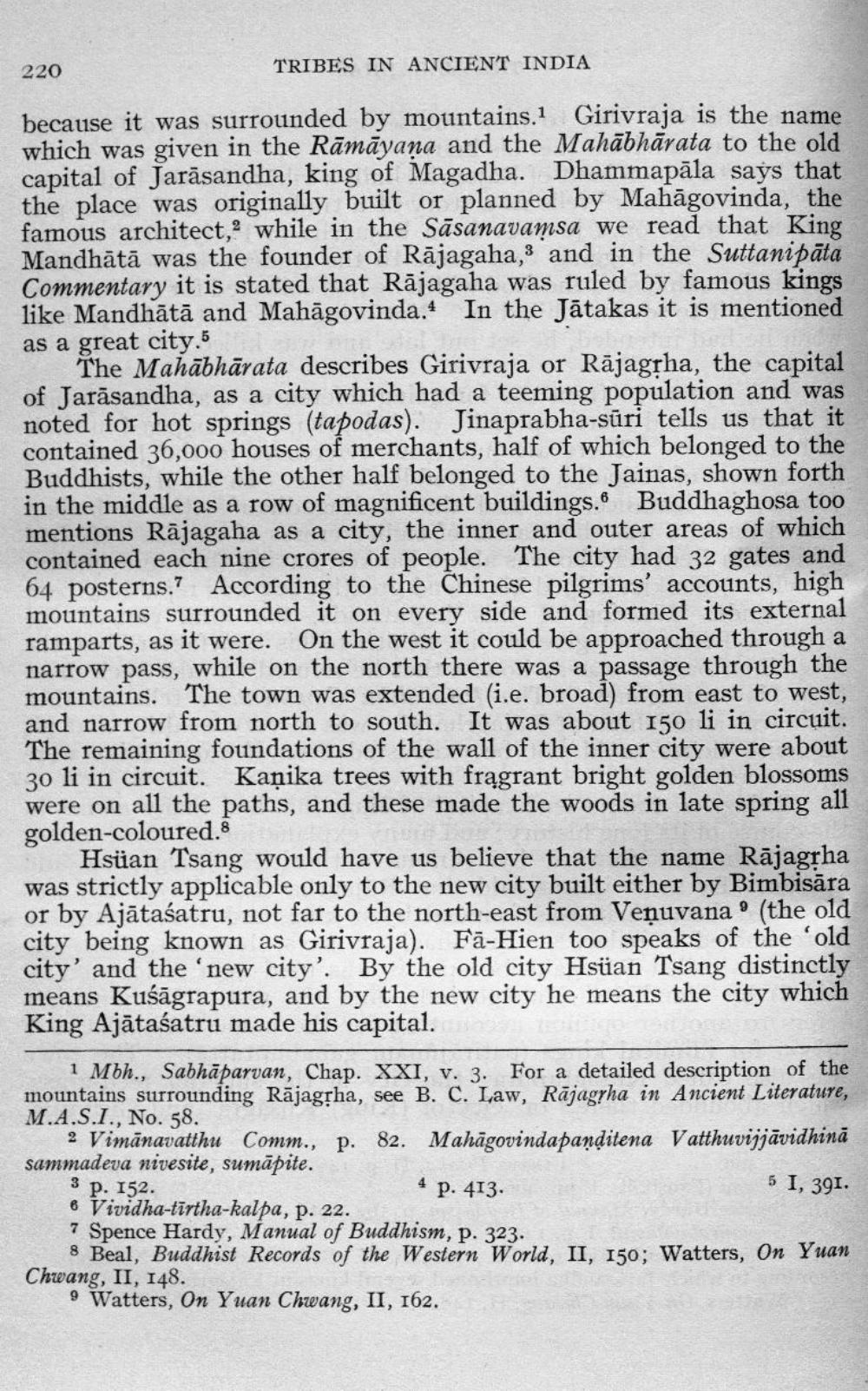________________
220
TRIBES IN ANCIENT INDIA
because it was surrounded by mountains.1 Girivraja is the name which was given in the Ramayana and the Mahabharata to the old capital of Jarasandha, king of Magadha. Dhammapala says that the place was originally built or planned by Mahagovinda, the famous architect, while in the Sasanavamsa we read that King Mandhātā was the founder of Rajagaha, and in the Suttanipata Commentary it is stated that Rajagaha was ruled by famous kings like Mandhātā and Mahagovinda. In the Jātakas it is mentioned as a great city.5
3
The Mahabharata describes Girivraja or Rajagṛha, the capital of Jarasandha, as a city which had a teeming population and was noted for hot springs (tapodas). Jinaprabha-süri tells us that it contained 36,000 houses of merchants, half of which belonged to the Buddhists, while the other half belonged to the Jainas, shown forth in the middle as a row of magnificent buildings. Buddhaghosa too mentions Rajagaha as a city, the inner and outer areas of which contained each nine crores of people. The city had 32 gates and 64 posterns. According to the Chinese pilgrims' accounts, high mountains surrounded it on every side and formed its external ramparts, as it were. On the west it could be approached through a narrow pass, while on the north there was a passage through the mountains. The town was extended (i.e. broad) from east to west, and narrow from north to south. It was about 150 li in circuit. The remaining foundations of the wall of the inner city were about 30 li in circuit. Kanika trees with fragrant bright golden blossoms were on all the paths, and these made the woods in late spring all golden-coloured.8
9
Hsüan Tsang would have us believe that the name Rajagṛha was strictly applicable only to the new city built either by Bimbisāra or by Ajātaśatru, not far to the north-east from Venuvana (the old city being known as Girivraja). Fa-Hien too speaks of the 'old city' and the 'new city'. By the old city Hsüan Tsang distinctly means Kuśāgrapura, and by the new city he means the city which King Ajātaśatru made his capital.
1 Mbh., Sabhaparvan, Chap. XXI, v. 3. For a detailed description of the mountains surrounding Rajagṛha, see B. C. Law, Rajagṛha in Ancient Literature, M.A.S.I., No. 58.
2 Vimanavatthu Comm., p. 82. Mahagovindapanditena Vatthuvijjāvidhinā sammadeva nivesite, sumapite.
5 I, 391.
3 p. 152.
• Vividha-tirtha-kalpa, p. 22.
7 Spence Hardy, Manual of Buddhism, p. 323.
8 Beal, Buddhist Records of the Western World, II, 150; Watters, On Yuan Chwang, II, 148.
9 Watters, On Yuan Chwang, II, 162.
4
p. 413.




